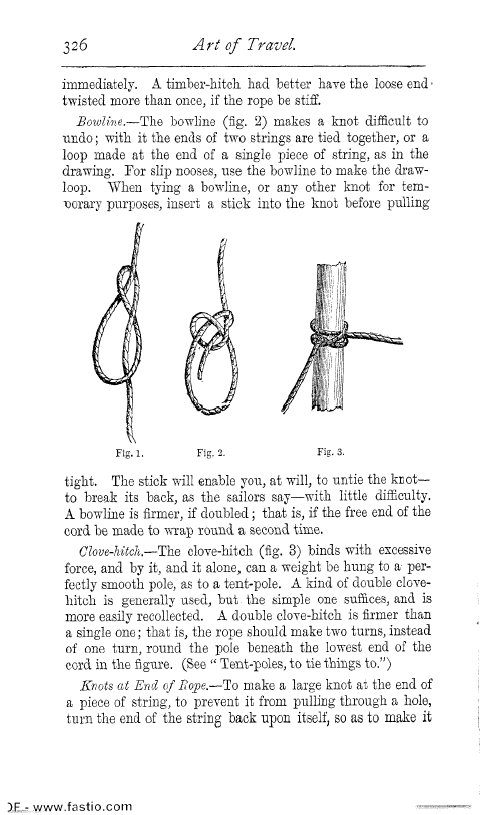| ||||||

OCR Rendition - approximate326 Art of Travel. immediately. A timber-hitch had better have the loose end twisted more than once, if the rope be stiff. Bowline.-The bowline (fig. 2) makes a knot difficult to undo; with it the ends of two strings are tied together, or a loop made at the end of a single piece of string, as in the drawing. For slip nooses, use the bowline to make the drawloop. When tying a bowline, or any other knot for temporary purposes, insert a stick into the knot before pulling tight. The stick will enable you, at will, to untie the knotto break its back, as the sailors say-with little difficulty. A bowline is firmer, if doubled ; that is, if the free end of the cord be made to wrap round a second time. Clove-hitch.-The clove-hitch (fig. 3) binds with excessive force, and by it, and it alone, can a weight be hung to a perfectly smooth pole, as to a tent-pole. A kind of double clovehitch is generally used, but the simple one suffices, and is more easily recollected. A double clove-hitch is firmer than a single one; that is, the rope should make two turns, instead of one turn, round the pole beneath the lowest end of the cord in the figure. (See "Tent-poles, to tie things to.") Knots at End of hope.-To make a large knot at the end of a piece of string, to prevent it from pulling through a hole, turn the end of the string back upon itself, so as to make it Fig. 1. Fig. 2. Fig. 3. ).F~, www.fastio.com |